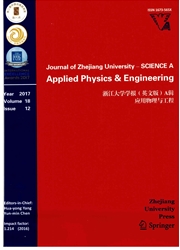

 中文摘要:
中文摘要:
最近,称为“亲密关系繁殖(AP ) ”的一个新聚类算法被建议了,它高效地稀疏地由传递在数据点之间的消息聚类有关资料。然而,我们想要聚类类似不在许多情况中是稀少的大尺度数据。这篇论文为与一个稠密的类似矩阵组织大尺度数据论述 AP 的二变体。本地途径是分区亲密关系繁殖(奶头) ,总括法是里程碑亲密关系繁殖(臀部) 。奶头首先在数据的子集传递消息然后作为重复的起始的步的数字合并他们;它能有效地减少聚类的重复的数字。舔在数据首先削尖的里程碑然后簇非里程碑数据点之间的通行证消息;加快聚类是一个大全球近似方法。实验在许多数据集上被进行,例如随机的数据点,歧管潜水艇空格,脸的图象和中国书法,和结果证明二条途径可行、适用。
 英文摘要:
英文摘要:
Recently a new clustering algorithm called 'affinity propagation' (AP) has been proposed, which efficiently clustered sparsely related data by passing messages between data points. However, we want to cluster large scale data where the similarities are not sparse in many cases. This paper presents two variants of AP for grouping large scale data with a dense similarity matrix. The local approach is partition affinity propagation (PAP) and the global method is landmark affinity propagation (LAP). PAP passes messages in the subsets of data first and then merges them as the number of initial step of iterations; it can effectively reduce the number of iterations of clustering. LAP passes messages between the landmark data points first and then clusters non-landmark data points; it is a large global approximation method to speed up clustering. Experiments are conducted on many datasets, such as random data points, manifold subspaces, images of faces and Chinese calligraphy, and the results demonstrate that the two approaches are feasible and practicable.
 同期刊论文项目
同期刊论文项目
 同项目期刊论文
同项目期刊论文
 期刊信息
期刊信息
